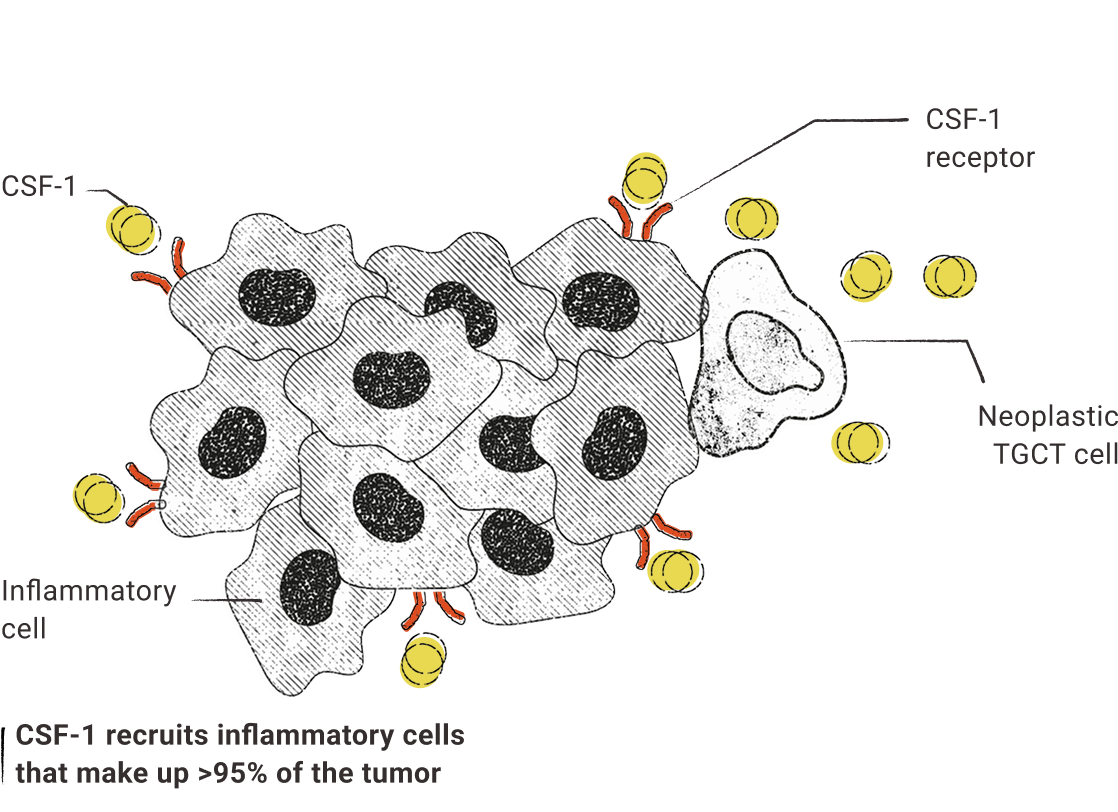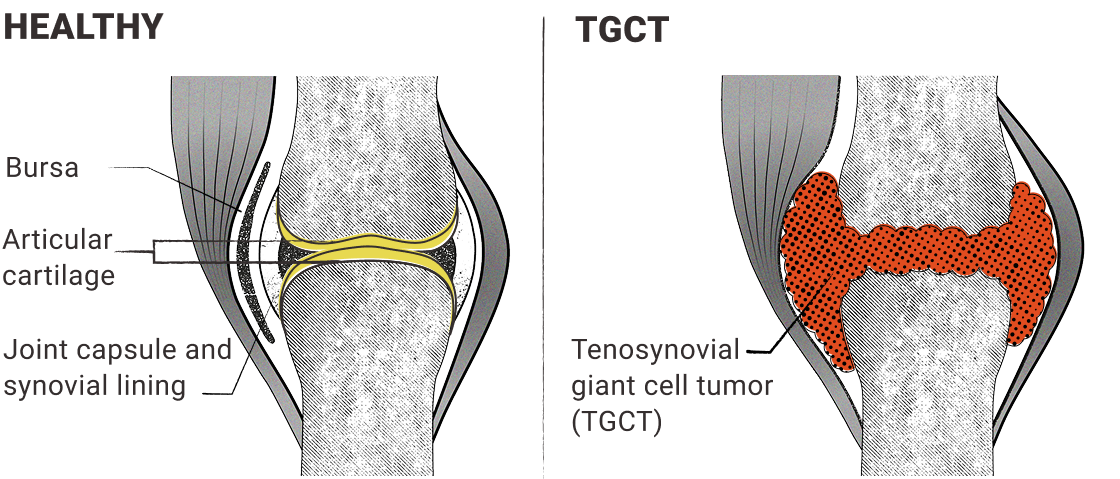UP NEXT
THE BURDEN OF TGCT IS BOTH DEVASTATING AND PROGRESSIVE
Tap for more information
BEYOND THE PHYSICAL
The mental health impact of chronic rare diseases, such as TGCT, can be serious. People living with rare diseases experience significantly higher rates of depression (69%) and anxiety (82%) compared to the general population (17%).12, 13
REFERENCES
1. Stacchiotti S, Dürr HR, Schaefer IM, et al. Best clinical management of tenosynovial giant cell tumour (TGCT): a consensus paper from the community of experts. Cancer Treat Rev. 2023;112:102491. doi:10.1016/j.ctrv.2022.102491 2. Stern S, McKenzie PF, Bernthal N, et al. Localized and diffuse tenosynovial giant cell tumor: real-world results from a patient observational registry. Future Oncol. 2025;21(12):1501-1510. doi:10.1080/14796694.2025.2488635 3. Nishida Y, Tsukushi S, Nakashima H, et al. Osteochondral destruction in pigmented villonodular synovitis during the clinical course. J Rheumatol. 2012;39(2):345-351. doi:10.3899/jrheum.110730 4. Spierenburg G, Staals EL, Palmerini E, et al. Active surveillance of diffuse-type tenosynovial giant cell tumors: a retrospective, multicenter cohort study. Eur J Surg Oncol. 2024;50(2):107953. doi:10.1016/j.ejso.2024.107953 5. Stone WL, Basit H, Zubair M, Burns B. Pathology, inflammation. In: StatPearls. Treasure Island (FL): StatPearls Publishing; August 11, 2024. 6. Spierenburg G, van der Heijden L, van Langevelde K, et al. Tenosynovial giant cell tumors (TGCT): molecular biology, drug targets and non-surgical pharmacological approaches. Expert Opin Ther Targets. 2022;26(4):333-345. doi:10.1080/14728222.2022.2067040 7. Riedel R, Verini C, Fuangtharnthip K, Felser B, Palma J, Occhiuzzi L. Improving resources and support for patients with tenosynovial giant cell tumor. April 26, 2021. Accessed August 27, 2025. https://media.cancercare.org/publications/original/431-2021_TGCT.pdf 8. Synovial Joints. University Pressbooks. Accessed August 27, 2025. https://university.pressbooks.pub/test456/chapter/synovial-joints/ 9. TGCT Support. About TGCT. Accessed August 27, 2025. https://www.tgctsupport.org/about-tgct.html. 10. Bernthal NM, Spierenburg G, Healey JH, et al. The diffuse-type tenosynovial giant cell tumor (dt-TGCT) patient journey: a prospective multicenter study. Orphanet J Rare Dis. 2021;16(1):191. doi:10.1186/s13023-021-01820-6 11. Cook NS, Landskroner K, Shah B, Walda S, Weiss O, Pallapotu V. Identification of patient needs and preferences in pigmented villonodular synovitis (PVNS) using a qualitative online bulletin board study. Adv Ther. 2020;37:2813–2828. doi:10.1007/s12325-020-01364-4 12. Shire. Rare Disease Impact Report: Insights from patients and the medical community. 2013. Accessed August 27, 2025. https://globalgenes.org/wp-content/uploads/2013/04/ShireReport-1.pdf. 13. Nunn R. “It’s not all in my head!” - The complex relationship between rare diseases and mental health problems. Orphanet J Rare Dis. 2017;12(1):29. doi.org/10.1186/s13023-017-0591-7


